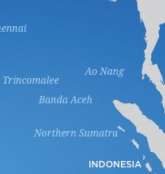Together with the California Earthquake Authority (CEA), RMS co-hosted a webinar on May 17 for the CEA’s global panel of catastrophe reinsurers to explore how new earthquake science and RMS modeling impacts the CEA and its markets. The CEA is one of the largest earthquake insurance programs in the world with nearly one million policyholders throughout California. In the webinar, we analyzed and shared insights about the risk to the CEA book using the new Version 17 RMS North America Earthquake Models which was just released on April 28.
The new RMS model, representing over 100 person-years of R&D, incorporates significant new developments in earthquake science and data over the past decade, including the new U.S. Geological Survey (USGS) seismic hazard model which introduced the Uniform California Earthquake Rupture Forecast Version 3 (UCERF3). The new RMS model also incorporates the Pacific Earthquake Engineering Research Center’s (PEER) new ground motion predictions equations referred to as the Next Generation Attenuation Functions for Western U.S. Version 2 (NGA-West2, 2015). This leverages six times more ground motion recordings (21,332 versus 3,551 to be exact) across almost 4,150 stations, compared to 1,611 stations in the previous version, NGA-West1 (2008). Both UCERF3 and NGA-West2 were funded by the CEA.
New insights from billions of dollars in insured losses from global events such as the 2010-11 Canterbury Earthquake Sequence in New Zealand among others have also been incorporated, along with an unprecedented resolution of data on soil-related conditions to better characterize local variability in ground motion and liquefaction.

For California, the incorporation of both new earthquake science and improved computational methods enhances our ability to characterize the risk and increases confidence associated with the impacts of large events. A key insight from the new model is that we now understand that more of the risk in California is driven by the “tail.” New science surrounding the potential for earthquake activity in California suggests less frequent moderate-sized earthquakes, but a relative increase in the frequency of larger earthquakes which can rupture across a network of faults creating more correlated damage and loss.
While modeled average annual losses (AALs) may be lower for many policies or portfolios, the severity of losses at critical return periods remains consistent, and in some cases even greater. The intuition here is a shift in the relationships between frequency and severity, increasing the variance. Earthquake is a tail-risk peril and now more than ever, risk management strategies and business practices need a holistic approach to pricing and capital, with a full consideration of the distribution throughout the tail.
Another generalized insight from the new model is a more balanced geographic distribution of risk across California. On an industry state-wide level, earthquake risk is now becoming more balanced between Southern and Northern California where it was once skewed more towards Southern California. These new regional patterns of risk, including new correlations within the sub-regions of California and across the state, will suggest new priorities for risk management and new opportunities to diversify risk and deploy capacity in more efficient ways. Of course, specific impacts will vary significantly depending on the particular composition of an individual book of business.
A third new insight is that within California, there is now more differentiation in location-to-location risk, allowing us to discern more variability in the risk at the individual locations or at the account-level. For example, the higher resolution models of surficial deposits increase local variability. Thus, relative to average changes in localized territories, there is now more dispersion in those territories. And, much finer-grained treatment of liquefaction allows us to see that many locations previously thought to be susceptible to liquefaction are not, and some are even riskier.
Better science and computational methods provide new measures of risk, but it’s more than just the numbers. It’s about the new insights, and the opportunities they create to build a more resilient book of business and create new solutions for the market.







